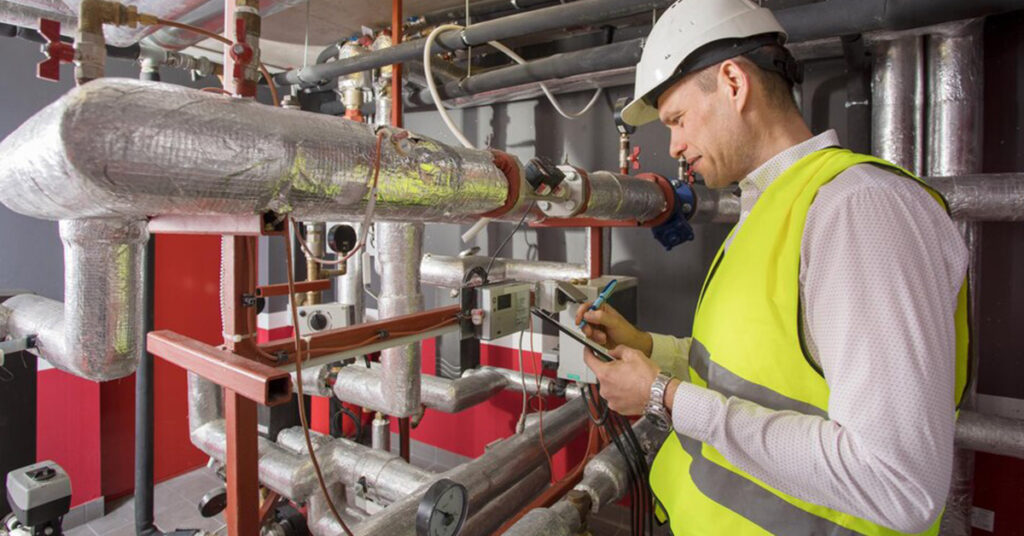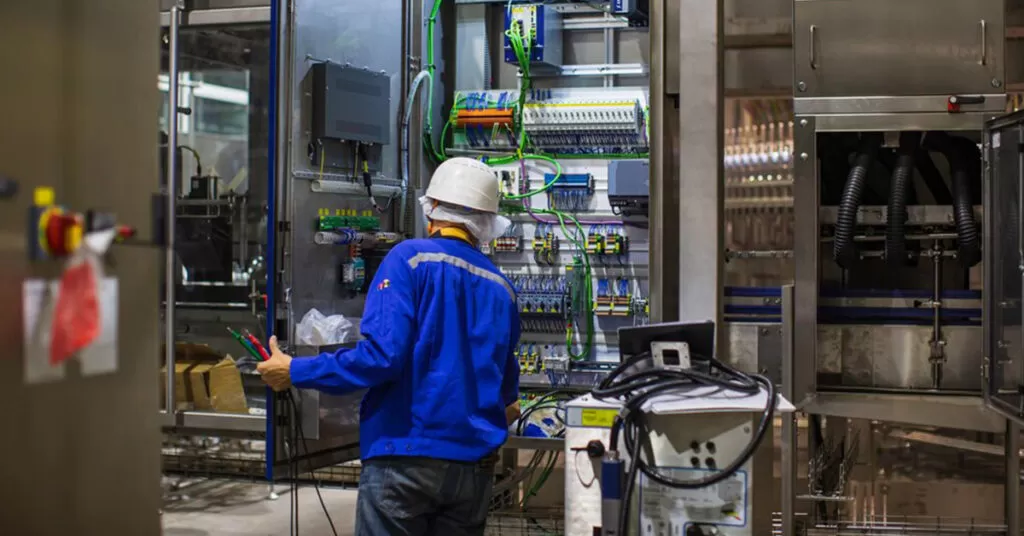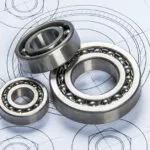In the world of construction, where imagination takes form, there exists a hidden force that wields the power to shape extraordinary efficiency, performance, and innovation. It is none other than MEP services – the backbone of every successful construction endeavor. In this comprehensive exploration, we delve deep into the realm of MEP services, unraveling their transformative role and unveiling the intricate symphony they conduct within construction projects.
Table of Contents
Understanding MEP Services:
An Overview At the heart of every architectural masterpiece lies the intricate web of Mechanical, Electrical, and Plumbing (MEP) services. These multifaceted systems are the lifeblood of buildings, seamlessly integrating vital components to ensure functionality, efficiency, and sustainability. MEP services encompass a wide range of elements, including heating, ventilation, air conditioning, electrical power distribution, lighting, fire protection, plumbing, and more. They work in unison, harmonizing the diverse needs of a structure to create a cohesive and optimized environment.

MEP services form the backbone of a building, providing the infrastructure and utilities necessary for its operation. The mechanical aspect covers heating, cooling, and ventilation systems, ensuring comfortable indoor environments. Electrical systems encompass power distribution, lighting, and control systems, enabling the smooth flow of electricity throughout the building. Plumbing systems include water supply, drainage, and fire protection systems, guaranteeing the availability of clean water and efficient wastewater management. By seamlessly integrating these elements, MEP services enable buildings to function effectively, accommodating the needs of occupants and supporting their activities.
Enhancing Building Systems Efficiency
The optimization of building systems is one of the most profound contributions of MEP services. By incorporating advanced engineering principles, MEP experts fine-tune and streamline mechanical, electrical, and plumbing systems to achieve unmatched efficiency. Heating, Ventilation, and Air Conditioning (HVAC) systems are meticulously designed to deliver optimal temperature control, air quality, and energy conservation. Through innovative technologies such as energy recovery systems, smart thermostats, and building automation, MEP services ensure buildings adapt intelligently to occupants’ needs, reducing energy consumption and environmental impact.
HVAC systems play a crucial role in maintaining occupant comfort and indoor air quality. By designing HVAC systems with energy efficiency in mind, MEP professionals optimize equipment selection, system layout, and controls to minimize energy waste and reduce operational costs. The integration of advanced control systems enables precise temperature and humidity regulation, ensuring a comfortable and productive environment while minimizing energy consumption. Energy recovery systems further enhance efficiency by capturing and utilizing waste heat or cooling to pre-condition incoming fresh air, reducing the load on heating and cooling equipment.
In addition to HVAC systems, lighting plays a significant role in energy optimization within buildings. MEP experts leverage energy-efficient lighting fixtures, such as LED technology, to reduce power consumption while maintaining optimal illumination levels. Lighting control systems, including occupancy sensors and daylight harvesting, further enhance energy savings by adjusting lighting output based on occupancy and available natural light. By embracing daylighting strategies, buildings can minimize their reliance on artificial lighting, promoting energy efficiency and reducing environmental impact.
Electrical systems within buildings also benefit from MEP optimization. By employing efficient power distribution strategies and utilizing energy-efficient equipment, MEP professionals minimize power losses and improve overall system efficiency. The careful selection of electrical components, such as transformers and circuit breakers, ensures optimal performance and reduces energy waste. Through advanced electrical system design and implementation, MEP services contribute to the efficient and reliable operation of electrical systems, supporting the diverse needs of the building and its occupants.
Ensuring Safety and Compliance
Safety stands as a paramount concern in construction projects, and MEP services play a pivotal role in upholding the highest standards of safety and compliance. MEP systems incorporate rigorous fire protection measures, including fire detection, suppression, and evacuation systems, ensuring the well-being of occupants. Electrical systems undergo meticulous design, installation, and testing processes to ensure they adhere to stringent codes and regulations, minimizing the risk of electrical hazards. By championing safety and compliance, MEP services create an environment where people feel secure and protected.
Fire protection systems within buildings are a crucial aspect of MEP services. These systems include fire alarm systems, sprinkler systems, smoke control systems, and emergency evacuation plans. Through careful design, installation, and maintenance, MEP professionals ensure that fire protection systems meet the specific requirements of the building and comply with applicable codes and standards. By implementing reliable fire detection and suppression systems, they mitigate the risk of fire-related incidents and provide early warning to occupants, enabling safe evacuation.

Electrical safety is another vital component of MEP services. Proper grounding, insulation, and circuit protection measures are essential to minimize the risk of electrical shocks and fires. MEP professionals ensure that electrical systems are designed and installed in compliance with national and international electrical codes, ensuring the safety of both building occupants and the electrical infrastructure itself. Regular inspections and maintenance of electrical systems help identify and address potential hazards, ensuring the ongoing safety and reliability of the electrical distribution system.
Maximizing Building Performance
MEP services act as virtuoso performers, orchestrating building performance to its fullest potential. Lighting design experts collaborate with architects to create captivating spaces, utilizing natural and artificial lighting to enhance mood, productivity, and visual appeal. Acoustic engineers craft harmonious environments by controlling sound reflections, diffusion, and insulation, resulting in optimized auditory experiences. Plumbing systems are designed for efficient water distribution and wastewater management, incorporating water-saving fixtures and technologies. By prioritizing performance, MEP services elevate buildings into immersive, comfortable, and sustainable spaces.
Lighting design plays a crucial role in creating visually appealing and functional spaces. MEP professionals work closely with architects and interior designers to develop lighting schemes that enhance architectural features, create focal points, and establish the desired ambiance. By carefully selecting lighting fixtures, incorporating dimming controls, and balancing natural and artificial lighting, MEP services bring spaces to life, ensuring optimal visual comfort and reducing energy consumption.
Acoustic performance is another critical aspect of building design, particularly in spaces where sound quality and noise control are paramount. MEP services collaborate with acoustic engineers to analyze and address sound-related challenges. Through the strategic placement of sound-absorbing materials, sound barriers, and innovative acoustic design techniques, they create environments that facilitate clear communication, minimize noise disturbances, and enhance occupant comfort.
Plumbing systems within buildings contribute to both occupant comfort and environmental sustainability. MEP professionals design plumbing systems that ensure the efficient distribution of water, taking into account factors such as water pressure, flow rates, and pipe sizing. By incorporating water-saving fixtures and technologies such as low-flow toilets and faucets, graywater recycling systems, and rainwater harvesting systems, MEP services promote water conservation and reduce the overall environmental impact of the building.
Sustainable design principles are at the core of MEP services’ approach to building performance optimization. By integrating energy-efficient systems, utilizing renewable energy sources, and implementing strategies for waste reduction, MEP professionals contribute to the overall sustainability of the built environment. Through the application of green building standards and certifications, such as LEED (Leadership in Energy and Environmental Design), MEP services help create buildings that minimize resource consumption, reduce carbon emissions, and prioritize occupant health and well-being.
Cost Optimization through MEP Services
In an era where economic efficiency is paramount, MEP services shine as beacons of cost optimization. By integrating energy-efficient systems and technologies, MEP experts significantly reduce energy consumption, resulting in long-term cost savings for building owners and operators. From selecting high-efficiency equipment to implementing smart controls and building management systems, MEP services pave the way for substantial reductions in energy-related expenses. Moreover, by ensuring proper maintenance and periodic evaluations, MEP services minimize operational costs, prolong equipment lifespan, and enhance overall cost-effectiveness.
The incorporation of energy-efficient systems and technologies significantly impacts the operational costs of buildings. By opting for high-efficiency HVAC systems, lighting fixtures, and energy management systems, building owners can reduce their energy consumption and lower utility bills. MEP services provide expertise in evaluating and selecting energy-efficient equipment and systems that align with the specific needs and budget of the project. Through life cycle cost analysis, MEP professionals help building owners make informed decisions, considering not only upfront costs but also long-term energy savings.
In addition to energy optimization, MEP services contribute to overall cost optimization through proactive maintenance and system monitoring. By implementing preventive maintenance programs, MEP professionals ensure the ongoing performance and reliability of building systems, minimizing the likelihood of breakdowns and costly repairs. Regular inspections and evaluations of equipment help identify potential issues early on, allowing for timely intervention and preventing costly failures. By prioritizing proper maintenance and adopting a proactive approach, MEP services help building owners optimize their operational expenses and extend the lifespan of their MEP systems.
Collaboration and Coordination in MEP Projects
The success of MEP projects rests upon the seamless collaboration and coordination among architects, engineers, contractors, and MEP specialists. From the earliest stages of design and planning, MEP experts collaborate closely with project stakeholders, ensuring optimal integration of MEP systems within the overall building framework. By working together, they identify synergies, overcome challenges, and align their efforts to achieve maximum efficiency, functionality, and aesthetic coherence. Effective coordination throughout the project lifecycle guarantees timely delivery, minimizing conflicts, and enhancing overall project success.
Collaboration among stakeholders is crucial during the design phase, where decisions regarding system layout, equipment selection, and routing take place. Architects, MEP engineers, and other professionals work in tandem to ensure that MEP systems are seamlessly integrated into the building’s design, without compromising architectural vision or functionality. Regular communication and coordination meetings facilitate the exchange of information, allowing for swift resolution of potential conflicts or design clashes.
During the construction phase, close collaboration between MEP specialists, general contractors, and tradespeople is essential to ensure accurate installation and proper system integration. MEP professionals provide guidance and oversight to ensure that MEP systems are installed in accordance with design specifications and industry best practices. Regular site inspections and quality control measures help identify and rectify any installation issues promptly.
Effective collaboration extends to the commissioning and handover phase, where MEP systems are tested, fine-tuned, and handed over to the building owners or operators. MEP specialists work closely with building operators to familiarize them with the systems, provide training on proper operation and maintenance, and address any post-construction issues that may arise. By fostering strong collaboration and coordination throughout the project lifecycle, MEP services contribute to the successful delivery of high-quality buildings that meet the functional, operational, and aesthetic needs of their occupants.
Conclusion
As the curtains draw on our in-depth exploration of MEP services in construction projects, we stand in awe of the profound impact they wield. From their integral role in enhancing efficiency and ensuring safety to their contribution in maximizing building performance and optimizing costs, MEP services emerge as the unsung heroes behind every remarkable structure. So, let us acknowledge and embrace their transformative power, inviting MEP services to conduct their symphony of excellence within our architectural endeavors. Together, we will create a symphony that reverberates through time, leaving an indelible mark on the world we build and the lives we touch.




